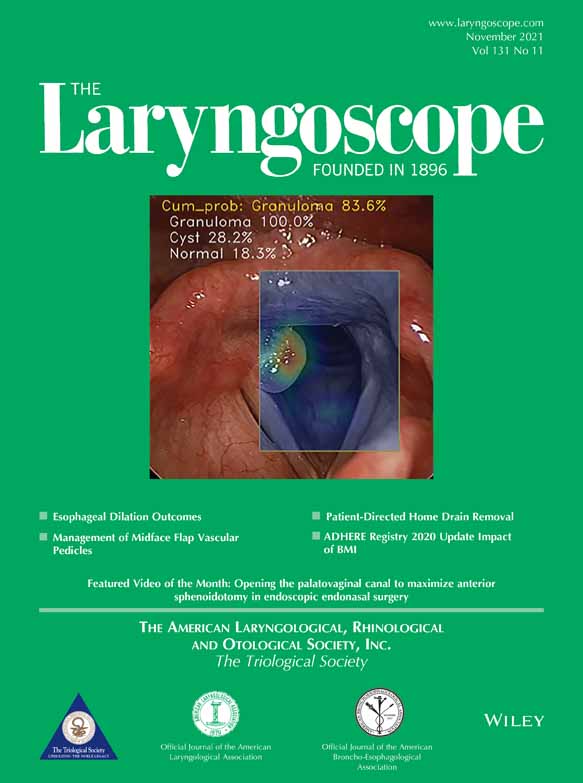Superior Semicircular Canal Dehiscence Syndrome Following Head Trauma: A Multi-institutional Review
Editor's Note: This Manuscript was accepted for publication on 06 July 2021.
Abstract accepted for poster presentation at the American Neurotology Society, 2021 COSM Meeting.
The authors have no funding, financial relationships, or conflicts of interest to disclose.
Abstract
Objective
To evaluate patients who become symptomatic from superior semicircular canal dehiscence (SSCD) following head trauma.
Study Design
Case series assessing patients presenting with SSCD after a trauma.
Methods
A case series was completed assessing patients presenting with SSCD after trauma. Data from three academic medical centers were evaluated, including the following: imaging, videonystagmography (VNG)/vestibular evoked myogenic potential (VEMP) testing, audiometric assessment, and surgical repair. Outcome measures included the following: 1) Description of audio-vestibular symptoms, 2) mean pre- and post-operative pure tone average (PTA), word recognition score (WRS), and air bone gap (ABG).
Results
A total of 14 patients were included; 86% were male. Approximately 43% were found to have bilateral SSCD on imaging, with 57% of patients pursuing surgical management. The most common presenting symptoms included pulsatile tinnitus (93%), autophony (79%), and hearing loss (64%). Approximately 36% of patients underwent VNG/VEMP testing, with 83.3% of those demonstrating abnormal results. The mean audiometric findings on the symptomatic side included an air-conduction PTA of 38.0 dB, bone-conduction PTA of 24.3 dB, WRS of 81%, and ABG of 17.9 dB. Among patients who underwent surgery (57%), there was no significant change in the air-conduction PTA, bone-conduction PTA, or WRS (P > .05). However, there was an improvement in the ABG (preoperative = 22.8 dB versus postoperative = 9.7 dB; P = .005).
Conclusion
Head trauma may be a potentiating event for SSCD syndrome. This study advances the hypothesis that these patients likely have underlying radiographic SSCD prior to their trauma, and a traumatic event increases in intra-vestibular or intracranial pressures, unmasking SSCD syndrome.
Level of Evidence
4 Laryngoscope, 131:E2810–E2818, 2021




